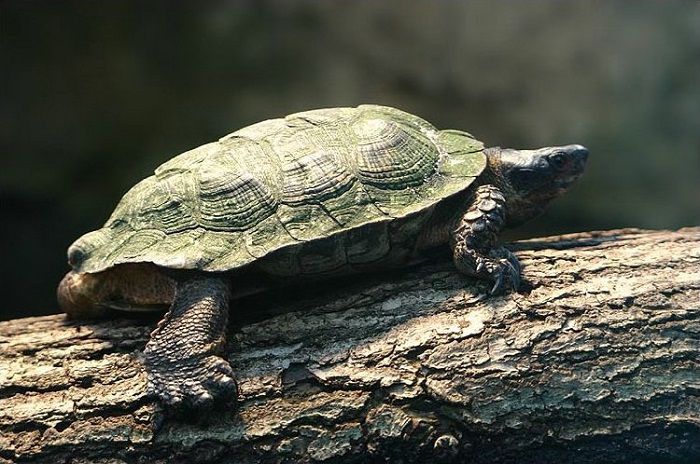Table of Contents
As a turtle grows, its shell will grow right along with it. This is accomplished by the growth of plate-like scales that form the outer layer of the shell. These scales are called scutes and are made from keratin, which is the same substance found in human hair and nails.
When the turtle grows , new scutes will grow underneath the old ones. The newer scutes are usually larger in size which allows the shell to expand with the growth of the turtle. Although the scutes do not normally fall off land turtles
, new scutes will grow underneath the old ones. The newer scutes are usually larger in size which allows the shell to expand with the growth of the turtle. Although the scutes do not normally fall off land turtles , the same is not true for aquatic turtles. Aquatic turtles actually shed the outermost layer of their scutes every year. This is because, unlike land turtles, aquatic turtles do not require the shell to be so thick.
, the same is not true for aquatic turtles. Aquatic turtles actually shed the outermost layer of their scutes every year. This is because, unlike land turtles, aquatic turtles do not require the shell to be so thick.
In fact, if an aquatic turtle were to acquire layer upon layer of scute, its shell would become so thick and heavy that it would make it difficult for it to swim. Another benefit of the top layer of the shell being shed is any algae that has formed on the shell is also removed.
Is Peeling Normal?
While an annual shed of scutes is completely normal for aquatic turtles, a peeling shell may not be as healthy. In some cases, peeling of the shell can indicate a problem. Parasites, bacteria, and algae can all cause issues with an aquatic turtle’s shell , as can a poor diet and issues within the turtle’s immediate environment.
, as can a poor diet and issues within the turtle’s immediate environment.
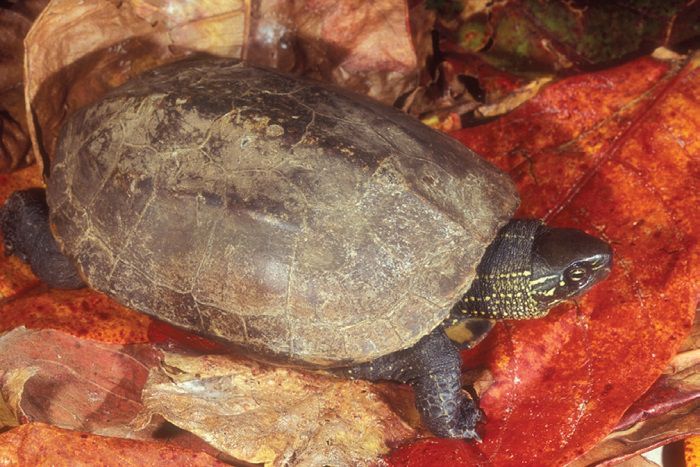
Chinese Pond Turtle 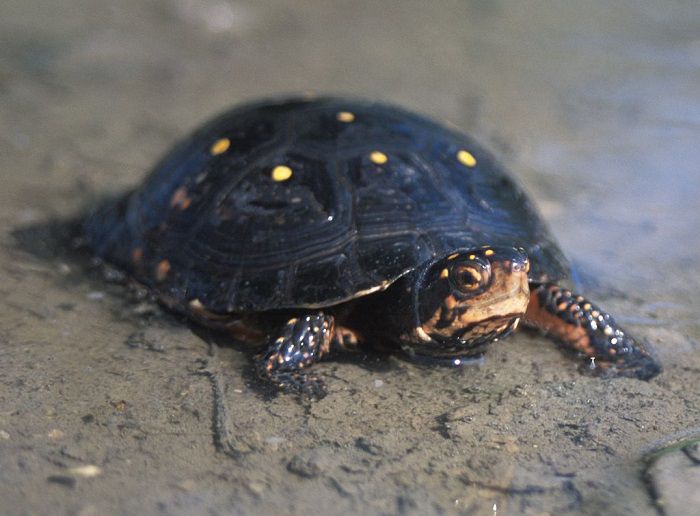
Spotted Turtle 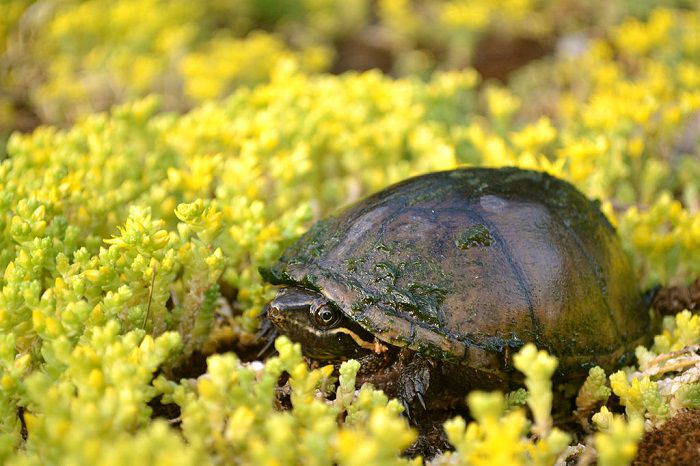
Stinkpot Turtle
To evaluate the cause of the shedding or peeling, it is best to establish whether it is normal shedding or something problematic. To do this, take a good look at your turtle’s shell. It will be easy enough to see if the shell looks healthy. If you notice unusual growth in the shell or redness around the peeling area, it is highly likely that this is not normal.
Healthy shedding of scutes will typically involve the entire scute being shed at once. It is not normal for scutes to be shed in pieces. If shedding in pieces does happen then it is far more likely that your turtle’s shell has some kind of disease or it has been injured. Look in the tank for any sharp rocks that could have caused injury to the shell. Also note that in normal shedding the scutes will be very thin and clear in appearance.
What Causes Abnormal Shedding or Peeling
There are a number of causes of abnormal peeling in aquatic turtles. As mentioned above, injury to the shell can cause peeling, but temperature can also play a role. For example, if the basking area is too hot, the turtle’s shell can become too dry and begin to flake and peel.
It is also important to ensure that your turtle is being fed appropriately. The type of food you provide will play a key role in its health, but the frequency and amount are also something to consider carefully as well. Aquatic turtles eat a varied diet and enjoy mostly meat with a small amount of plant matter. You can feed mealworms as well as pieces of raw chicken and fish. Fresh fruit and vegetables should also be provided, but in much smaller amounts.
a varied diet and enjoy mostly meat with a small amount of plant matter. You can feed mealworms as well as pieces of raw chicken and fish. Fresh fruit and vegetables should also be provided, but in much smaller amounts.
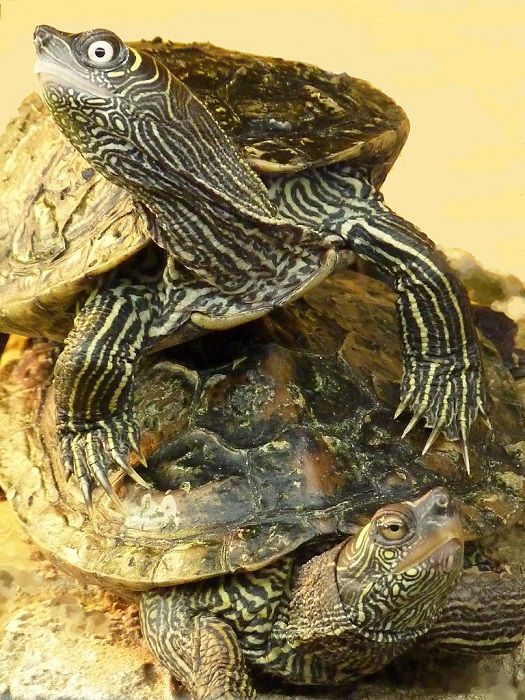
What many people do not realize is that it is quite possible to overfeed an aquatic turtle. It is important to keep an eye on your turtle because if you do feed it too much when it is young, it can lead to rapid growth. This can then cause deformities in the shell and abnormal shedding. You will also need to make sure that your turtle is getting sufficient vitamins and minerals to keep its shell healthy. You can buy vitamin and mineral supplements in any pet store or online. If interested, Amazon has a great collection here (opens in a new tab).
Cleaning out your turtle’s aquarium regularly can also help prevent shell issues. Do remember that because your aquatic turtle eats in the water, this will need to be cleaned at least once a week, even if you do have a good, working filter. Aquatic turtles are messy eaters and often drop food as they chew. This food will sink and then sit at the bottom of the water along with the poop. Unless the water is cleaned frequently, bacteria can start to build up.
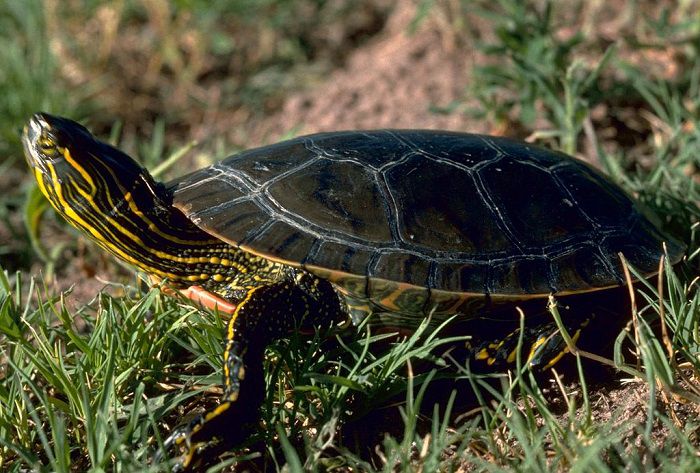
Western Painted Turtle 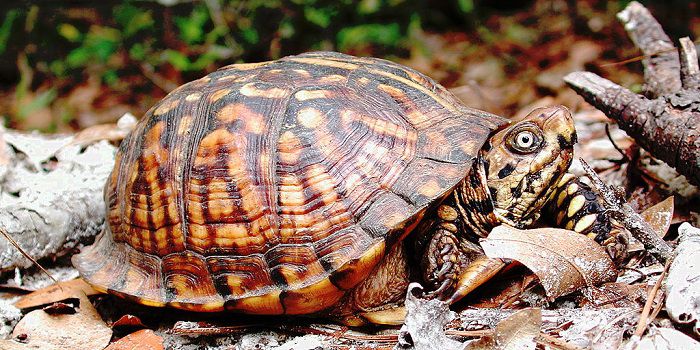
Eastern Box Turtle
Conclusion
It is important to be aware of what is normal shedding of scutes and what indicates a problem. If your turtle has abnormal shedding caused by infection, it will require antibiotics to treat the infection. It is best to avoid these issues by feeding your turtle the right diet and ensuring that it gets sufficient vitamins and minerals. Regular cleaning of the tank and a powerful filter can help to prevent the buildup of bacteria and fungi.
If you are worried about abnormal shedding, I recommend contacting a vet as soon as possible. Shell rot requires treatment with antibiotics. Your vet will also advise you on treatment that you can undertake at home to speed up recovery.
Photo Credits:
- Featured Image (Wood Turtle): Wilfried Berns
 – CC BY-SA 2.0 DE
– CC BY-SA 2.0 DE
- Stinkpot Turtle: Ontley – CC BY 3.0

- Spotted Turtle: John J. Mosesso, NBII – public domain
- Chinese Pond Turtle: Mark O’Shea – CC BY 3.0

- Mississippi Map Turtle: A. Lange
 – CC BY 3.0
– CC BY 3.0
- Western Painted Turtle: Gary M. Stolz/U. S. Fish and Wildlife Service – CC BY 3.0

- Eastern Box Turtle: Stephen Friedt
 – CC BY 3.0
– CC BY 3.0

